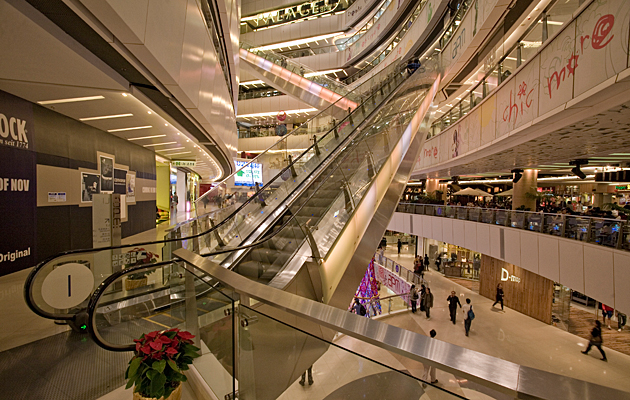|
|
||
|
Over the past 20 years, the mall has become a mainstay of east Asia’s explosive drive towards urbanisation. But architect Nicholas Jewell, author of a book about shopping malls in China, questions how much the typology has really changed The shopping mall’s face has changed over the past 20 years. Its out-of-town heyday, during the 1990s, was defined by postmodern neo-baroque excess such as Manchester’s Trafford Centre or the faux historicism of Kent’s Bluewater. In the here and now, London’s twin Westfield’s, Birmingham’s Bull Ring and Liverpool One, among many others, showcase the shopping mall as an agent of urban regeneration adorned with a collagist impression of hyper-modern architectural aesthetics. On the face of it, the shopping mall has gone from an expression of everything that architects hate, to a visual assemblage of the ornamental language that they love. So how much have things truly changed? Historically, the shopping mall’s spatial qualities were reduced to fixed, globally repeatable formulas. By far the most pervasive of these was the “dumbbell”, a plan form that balanced the draw of major retailers with smaller boutique stores along the internal streets of the shopping mall, guaranteeing profitability for all. With its layouts pre-determined, architects were left with the mall’s surface dressing, which served primarily as a distraction from the endless repetition of its manipulative spatial formula. So is the architectural transition of the past 20 years purely ornamental? When the focus of this question is cast globally it would appear that more fundamental changes are afoot. While the suburban shopping mall is an invention of western modernity, its current urban manifestations have evolved from more complex culturally hybrid scenarios, most particularly in east Asia. China typifies the extent to which the shopping mall has become a mainstay of the explosive, mixed-use urbanisation that has gripped developing Asia. Here the shopping mall is an agent of densification, allying itself with ideas of flow and efficiency that have preoccupied architectural luminaries such as Rem Koolhaas and Zaha Hadid. The radical aesthetics that accompany these spaces speak of a more convincing fusion of space and form, potentially resolving the historical conceit at the shopping mall’s core. History has been central to the shopping mall’s aesthetic treatment for some time. Suburban post-modernity spoke to a western culture that was proud of its historic exploits, using its fragmentary assemblage of cultural artefacts to evoke a sense of comfort amid globalisation’s destabilising flows. However, Chinese history, for much of the past 200 years, has been a far more painful affair. In an environment where buildings are frequently employed as agents of propaganda, the shopping mall’s hyper-modern architectonics could easily be seen as a totem of a more bountiful consumption-led future. All of this asks whether the shopping mall has been able to truly shake off its history in becoming a constituent of urban regeneration. Westfield et al may talk the talk, but their fragmentary language also reveals an architectural approach that frequently remains skin deep. New, more complex three-dimensional spatial diagrams culled from Asia now define a hybrid urban approach, but the mall’s agenda of coercion remains present at their heart. The shopping mall may have adopted a new set of clothes, but beneath the surface little has changed. |
Words Nicholas Jewell |
|
|
||





















